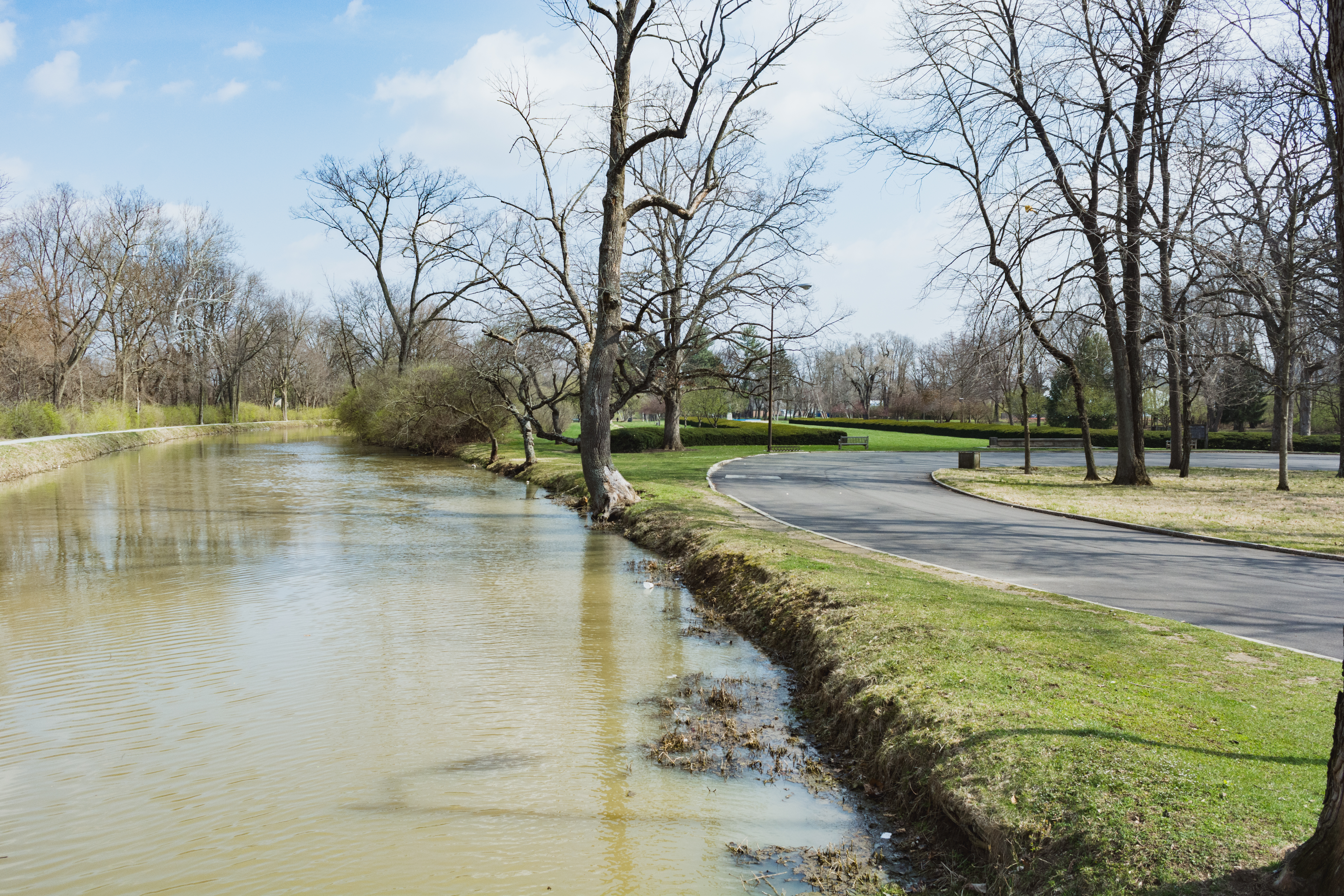Photo of canal by Adam Cvik.
RACHEL ANDERLE | ASST. NEWS EDITOR | randerle@butler.edu
Holcomb Gardens is the final stop for a federal flood protection project 20 years in the making.
Construction into the gardens is likely to begin this summer, said Betsy Whitmore, Indianapolis Department of Public Works communication chief.
The project consists of a wall that will protect 1,200 homes from Broad Ripple to Butler- Tarkington, decreasing the flood insurance costs of residents while simultaneously increasing the value of their property, according to the Indianapolis Department of Public Works.
This construction is the last leg of the Indianapolis North Flood Damage Reduction Project and follows Westfield Boulevard south west into campus from Kessler Boulevard. This section, dubbed the “Westfield alignment”, or phase 3B-3, was delayed for several years while the city of Indianapolis tried to find alternative routes.
Bruce Arick is Butler’s vice president of finance and administration.
“Our board, through some formal actions a couple of years ago, did pass a resolution that they opposed that alignment,” he said. “That said, that alignment hasn’t gone away. The Feds are still moving that project forward.”
Butler opposed the project because it cut through Holcomb Gardens without providing adequate flood coverage to the areas where the university needs it most.
The U.S. Army Corps of Engineers, those constructing this federal project, signed a Memorandum of Agreement detailing how they will work to minimize the project’s effects. Holcomb Gardens is eligible to be listed on the National Register of Historic Places.
Attempts will be made to reduce the visual impact of the wall in this last phase of the project. The height will be reduced and the color altered in certain areas to better blend into the natural environment.
“I suspect we will ultimately work out an agreeable compromise with the Feds and the city on the Westfield alignment on how it will come into Holcomb Gardens,” Arik said.
Abigale Wynn, sophomore actuarial science and mathematics major, said she is excited about the construction coming into Holcomb Gardens if it means it will keep the area from being constantly wet and muddy.
“If you want to have pleasant gardens that people want to go to, it is good to have grass,” Wynn said. “The whole mall down the middle is just mud.”
As a resident at University Terrace on the northwest side of campus, Wynn walks through the Gardens two or three times every day to get to class.
“Every time it rains, the canal pours water into the gardens, and it ruins your shoes,” Wynn said.
The walking path near the canal also fills with water and she must walk through Apartment Village in order to get to class on the main campus, Wynn said.
Wynn also serves as senator on Student Government Association. She is a representative for campus apartments. She said she has tried to work with SGA to fund better routes for University Terrace residents to take, but any project would be too expensive.
“This is the only thing my constituents actually care about,” she said.
The final version of the plan, which still includes cutting into Holcomb Gardens, was approved in December 2015.

